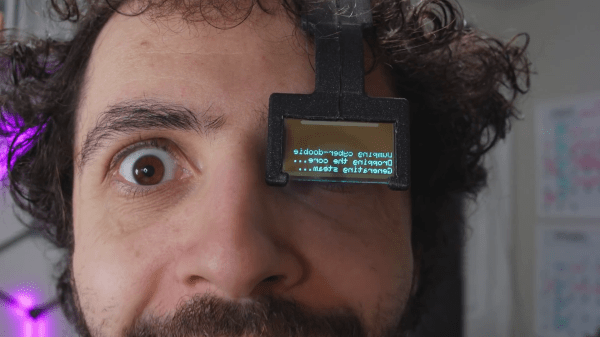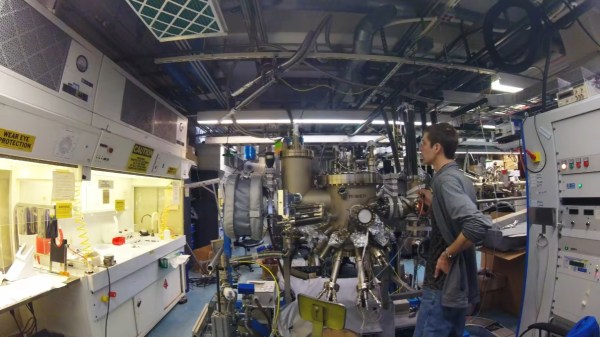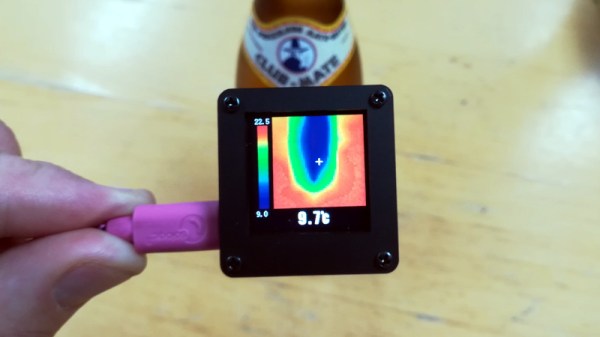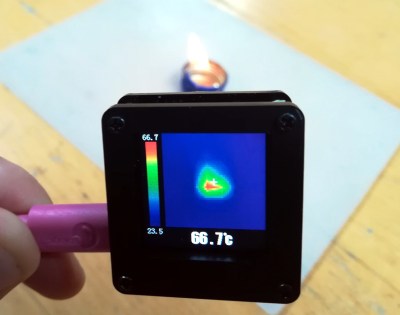After seeing the cheap transparent OLED displays that have recently hit the market, you might have thought of using them as an affordable way to build your own wearable display. To save you the inevitable disappointment that would result from such a build, [Zack Freedman] took it upon himself to test out the idea, and show why transparent wearable displays are a harder than it looks.
He put together a headband with integrated microcontroller that holds the transparent OLED over the user’s eye, but unfortunately, anything shown on the display ends up being more or less invisible to the wearer. As [Zack] explains in the video after the break, the human eye is physically incapable of focusing on any object at such a short distance. Contrary to what many people might think, the hard part of wearable displays is not in the display itself, but rather the optics. For a wearable display to work, all the light beams from the display need to be focused into your eyeball by lenses and or reflectors, without distorting your view of everything beyond the lens. This requires, lightweight and distortion-free collimators and beam splitters, which are expensive and hard to make.
While these transparent OLEDs might not make practical heads-up displays, they are still a cool part for projects like a volumetric display. It’s certainly possible to build your own smart glasses or augmented reality glasses, you just need to focus on getting the optics right.





















